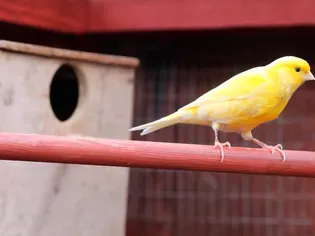Introducing a New Bird to Your Parrot
Updated on 05/26/24

Introducing a New Bird to Your Parrot: A Comprehensive Guide to a Harmonious Integration
Welcoming a new feathered companion into your home can bring immense joy, but it's crucial to approach the introduction process with care and patience. Introducing a new bird to your parrot requires a well-planned and executed strategy to ensure a successful integration and minimize potential conflicts. This comprehensive guide will provide you with invaluable insights and step-by-step instructions to facilitate a harmonious coexistence between your feathered friends.
Creating the Optimal Environment
Before introducing your new bird, it's essential to prepare the environment to foster a positive experience. Consider the following:
1. Separate Cages: Initially, keep the birds in separate cages placed in different rooms. This allows them to acclimate to the new environment and avoid immediate confrontations.
2. Adequate Space: Ensure both birds have sufficient space in their cages to move around comfortably.
3. Stimulating Environment: Provide plenty of toys, perches, and foraging opportunities within the cages to keep the birds mentally and physically stimulated.
Gradual Introduction
Once the birds have settled into their separate cages, begin the gradual introduction process:
1. Scent Exchange: Swap toys or blankets between the cages to allow the birds to become familiar with each other's scents.
2. Visual Contact: Gradually increase the birds' exposure to each other by placing their cages closer together. Allow them to observe each other from a distance.
3. Short Supervised Interactions: Supervise brief interactions outside the cages for a few minutes each day. Keep the birds separated by a screen or mesh barrier to prevent direct contact.
Monitoring and Adjusting
Throughout the introduction process, closely monitor the birds' behavior and adjust the approach accordingly:
1. Positive Body Language: Look for signs of acceptance, such as preening, mutual grooming, and chirping towards each other.
2. Signs of Aggression: Be alert to aggressive behaviors like lunging, biting, or feather plucking. If conflicts arise, separate the birds and re-evaluate the introduction plan.
3. Patience and Consistency: Remember that this process may take time and patience. Consistency in the introduction schedule and approach is crucial.
Success Factors
To enhance the chances of a successful integration, consider the following:
1. Age and Species Compatibility: Younger birds and birds of the same species tend to integrate more easily.
2. Personality Matching: Observe the birds' personalities and preferences. Consider adopting birds that complement each other in temperament.
3. Health Status: Ensure both birds are healthy before introducing them. Health issues can lead to stress and aggression.
4. Neutral Territory: When introducing the birds outside the cages, choose a neutral location where neither bird feels territorial.
Troubleshooting Common Challenges
1. Territorial Aggression: Some parrots may exhibit territorial behavior and guard their cages or favorite toys. Introduce the birds in a neutral environment to minimize this issue.
2. Competition for Resources: Provide ample food, water, and perches to avoid competition that can lead to conflicts.
3. Bullying Behavior: If one bird bullies the other, separate them immediately and consult a veterinarian or avian behaviorist for guidance.
Building a Bond
Once the birds have integrated successfully, foster their bond through positive reinforcement:
1. Joint Activities: Engage in activities together, such as playing with toys, singing songs, or watching movies.
2. Shared Treats: Offer the birds their favorite treats simultaneously to create positive associations with each other.
3. Love and Attention: Show equal love and attention to both birds to prevent jealousy or resentment.
Conclusion
Introducing a new bird to your parrot can be a rewarding experience, but it requires careful planning, patience, and observation. By following the steps outlined in this comprehensive guide, you can increase the chances of a successful integration and create a harmonious environment for your feathered companions. Remember to monitor the birds' behavior closely, adjust the process as needed, and celebrate the milestones along the way.
Explore More Pets

Small Bird Breeds
Gloster Canary: Bird Species Profile

Small Bird Breeds
Java Finch: Bird Species Profile

Small Bird Breeds
Zebra Finch (Chestnut-Eared Finch): Bird Species Profile

Small Bird Breeds
Alexandrine Parakeet: Species Characteristics & Care

Small Bird Breeds
Canary: Bird Species Profile

Small Bird Breeds
Lovebird (Pocket Parrot) Species Profile

Small Bird Breeds
A Guide to Pet Budgie Birds

Small Bird Breeds
Types of Small Parrots
